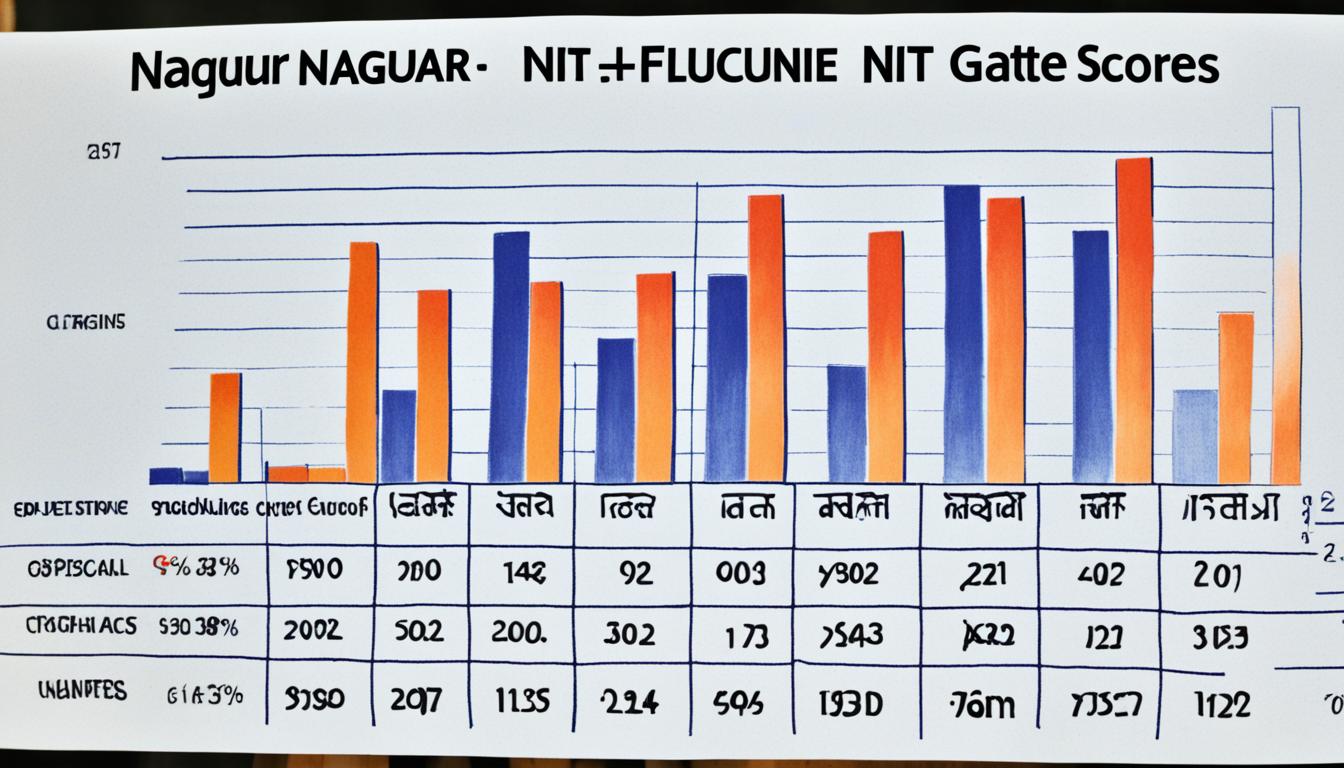Welcome to our exploration of irrational numbers! In this article, we will delve into the definition of irrational numbers and their significance in mathematics. Whether you’re a math enthusiast or simply curious about numbers, this guide will provide you with a clear understanding of this fascinating concept.
Irrational numbers are numbers that cannot be expressed as fractions or ratios. Unlike rational numbers, which can be written as a simple fraction, irrational numbers have decimal representations that neither terminate nor repeat. This unique property sets them apart and makes them intriguing to mathematicians and learners alike.
In the realm of mathematics, irrational numbers play a crucial role in various calculations and equations. They are found in diverse fields such as geometry, trigonometry, and calculus, and are fundamental to understanding the deeper complexities of these subjects.
Key Takeaways:
- Irrational numbers cannot be expressed as fractions or ratios.
- The decimal representations of irrational numbers are non-terminating and non-repeating.
- Irrational numbers are vital in several mathematical disciplines, including geometry, trigonometry, and calculus.
What Are Irrational Numbers?
In the fascinating world of mathematics, irrational numbers hold a significant place. These numbers are intriguing and mysterious, offering a unique perspective on the mathematical realm. But what exactly are irrational numbers?
Irrational numbers are decimal numbers that cannot be expressed as a fraction or a ratio of two integers. Unlike rational numbers, which can be written as fractions, irrational numbers have decimal representations that neither terminate nor repeat.
To better understand this concept, let’s compare irrational numbers with rational numbers. Rational numbers include integers and fractions, such as 1, 7/3, or -5/2. These numbers can be expressed with a finite number of digits after the decimal point or as a repeating decimal, making them more straightforward to comprehend.
Irrational numbers, on the other hand, defy such simplicity. They possess an infinite number of decimal places without any discernible pattern. Their decimal expansions go on forever, without repeating the same sequence of digits. An example of an irrational number is π (pi), which begins with 3.14159 and extends indefinitely without any repetition.
“The irrationality of the world is the essence of mathematics.” – Julian Schwinger
Irrational numbers challenge the conventional notions of order and pattern within the realm of mathematics. Their mysterious nature ignites curiosity and fuels exploration in the field of number theory.
By understanding what irrational numbers are and how they differ from rational numbers, we can appreciate the depth and complexity that mathematics encompasses. In the next section, we will explore the properties of irrational numbers, uncovering their infinite nature and non-repeating decimal representations.
Properties of Irrational Numbers
As we continue our exploration of irrational numbers, it is important to understand their unique properties. These properties distinguish them from rational numbers and contribute to their significance in mathematics.
Irrational numbers have an infinite nature:
One key property of irrational numbers is that they cannot be expressed as a fraction or ratio between two integers. They possess an infinite number of decimal places, and these decimals do not terminate or repeat in a pattern. This infinite nature allows irrational numbers to represent quantities that cannot be expressed precisely by rational numbers alone.
The image below provides a visualization of the infinite decimal places of an irrational number:
Irrational numbers have non-repeating decimal representations:
Unlike rational numbers, which have decimal representations that either terminate or repeat in a pattern, irrational numbers have non-repeating decimals. This means that the decimal digits of an irrational number continue indefinitely without ever forming a repetitive sequence. This property adds to the complexity and uniqueness of irrational numbers.
Furthermore, irrational numbers can be approximated using decimal places. By using an increasing number of decimal digits in calculations, we can obtain more accurate approximations of irrational numbers. However, these approximations will always remain finite and will never precisely represent the irrational number itself.
Understanding the properties of irrational numbers is essential for comprehending their role in mathematical concepts and calculations. Their infinite nature and non-repeating decimal representations make them fascinating objects of study, leading to significant discoveries and insights in various branches of mathematics.
Real-Life Examples of Irrational Numbers
In this section, we will explore real-life examples of irrational numbers, showcasing their relevance beyond mathematical concepts. Irrational numbers can be found in various aspects of our world, including nature, architecture, and everyday objects.
1. The Golden Ratio
The golden ratio, denoted by the Greek letter φ (phi), is an example of an irrational number that appears in nature and art. It is approximately equal to 1.6180339887. The golden ratio can be observed in the spiral arrangement of leaves on plants, the shape of seashells, and the proportions of the Parthenon in Athens, Greece.
2. Pi
Pi (π) is another well-known irrational number, approximately equal to 3.14159. It is the ratio of a circle’s circumference to its diameter. Pi can be found in various fields such as physics, engineering, and architecture. For example, in architecture, the use of circular shapes and arches often involves calculations using pi to ensure structural stability and aesthetic appeal.
3. The Square Root of 2
The square root of 2 (√2) is an irrational number that has applications in geometry and measurements. It represents the ratio of the diagonal to the side of a square with sides of length 1. The Pythagorean theorem, which relates the sides of a right triangle, involves the square root of 2. The square root of 2 is also used in construction projects, ensuring accurate measurements and precise angles.
“The infinite nature of irrational numbers brings forth a mesmerizing beauty that transcends mathematical formulas and resonates in the world around us.”
These examples illustrate how irrational numbers manifest themselves in real-life phenomena, creating a deeper connection between mathematics and our everyday experiences. By understanding the presence of irrational numbers in various aspects of our world, we gain a greater appreciation for the elegance and complexity of mathematics.
Identifying Irrational Numbers
When working with numbers, it is essential to be able to distinguish between rational and irrational numbers. In this section, we will explore various methods to identify irrational numbers and highlight their unique characteristics.
Techniques for Identifying Irrational Numbers
1. Square Root Test: One way to identify irrational numbers is through the square root test. If a number cannot be expressed as the exact square root of an integer, it is likely an irrational number. For example, the square root of 2 (√2) is irrational because it cannot be expressed as a fraction or a terminating decimal.
2. Decimal Representation: Another indicator of irrational numbers is their decimal representation. Unlike rational numbers that have repeating or terminating decimals, irrational numbers have non-repeating, non-terminating decimals. For instance, the number π (pi) is an irrational number with an infinite, non-repeating decimal representation of 3.14159…
3. Proof by Contradiction: In some cases, proving that a number is irrational can require more advanced mathematical techniques. One common method is the proof by contradiction. This approach assumes that the number is rational, and then proceeds to derive a contradiction, proving that it is, in fact, irrational.
Illustrative Examples
Let’s take a look at some examples:
Example 1: Determine whether the number √3 is rational or irrational.
We can use the square root test to identify whether √3 is rational or irrational. Assuming √3 is rational, it can be expressed as a simplified fraction a/b, where a and b are integers with no common factors (except for 1).
| Assumption | √3 | Assumed Rational Form |
|---|---|---|
| √3 is rational | √3 | a/b |
We can then square both sides of the equation (√3 * √3 = (a/b) * (a/b)) to get 3 = (a^2)/(b^2).
From here, we can see that a^2 must be divisible by 3 since 3 is a prime number. This implies that a must also be divisible by 3. Let’s assume a = 3k, where k is an integer.
Plugging this back into the equation, we have 3 = (9k^2)/(b^2), which simplifies to 1 = (3k^2)/(b^2).
Now, we see that b^2 must be divisible by 3, and therefore, b must also be divisible by 3.
However, if both a and b are divisible by 3, it contradicts our initial assumption that a and b have no common factors other than 1. Hence, the assumption that √3 is rational is false, and we can conclude that √3 is an irrational number.
Example 2: Determine whether the number e is rational or irrational.
The number e, approximately equal to 2.71828, is a fundamental constant in mathematics. It is widely used in various fields, such as calculus and probability theory. Despite its importance, e is an irrational number.
The proof that e is irrational is more complex and utilizes techniques beyond the scope of this section. However, it provides an example of an irrational number that is not as straightforward to identify using simple tests or decimal representations.
By exploring techniques like the square root test, decimal representation, and proof by contradiction, we can effectively identify and differentiate irrational numbers from rational numbers in mathematical contexts. These methods enable us to grasp the fascinating nature of irrational numbers and their crucial role in various mathematical principles.

Conclusion
In conclusion, we have explored the fascinating world of irrational numbers and gained a deeper understanding of their significance in mathematics. Through our exploration, we have discovered that irrational numbers differ from rational numbers in their nature and representation.
While rational numbers can be expressed as fractions, irrational numbers cannot be expressed as fractions or integers. Instead, they have non-repeating and non-terminating decimal representations. Examples of irrational numbers include √2, π (pi), and e (Euler’s number).
Furthermore, we have seen how irrational numbers play a crucial role in various mathematical calculations, such as in geometry, trigonometry, and calculus. Their inclusion in mathematics enables us to solve complex problems and understand the intricacies of the mathematical world.
By grasping the concept of irrational numbers, we not only expand our mathematical knowledge but also develop a greater appreciation for the beauty and complexity of the universe. Understanding the differences between irrational and rational numbers allows us to navigate through the vast landscape of mathematics with confidence and opens doors to further exploration and discovery.
FAQ
What are irrational numbers?
Irrational numbers are real numbers that cannot be expressed as a simple fraction or ratio. They are numbers that go on infinitely without repeating. Examples of irrational numbers include √2, π (pi), and e (Euler’s number).
How do irrational numbers differ from rational numbers?
While irrational numbers cannot be expressed as fractions, rational numbers can. Rational numbers can be written as the ratio of two integers. For example, 1/2, 3/4, and 5/6 are all rational numbers.
What are some examples of irrational numbers?
Popular examples of irrational numbers include √2, which is approximately 1.41421356, π (pi), which is approximately 3.14159265, and e (Euler’s number), which is approximately 2.71828183. These numbers have decimal representations that continue infinitely without repeating.
What are the properties of irrational numbers?
Irrational numbers have a few key properties. They have infinite decimal expansions without repeating patterns, and they cannot be expressed as fractions or ratios. Additionally, irrational numbers can be approximated using decimal places but can never be fully expressed in decimal form.
How do we identify irrational numbers?
One way to identify irrational numbers is by observing their decimal representations. If a decimal number continues indefinitely without repeating, it is likely an irrational number. Another method is to check if a number can be expressed as a fraction. If it cannot, it is likely an irrational number.
Can irrational numbers be found in real life?
Yes, irrational numbers are present in various aspects of our daily lives. Examples include the ratio of the circumference of a circle to its diameter (π), the length of the diagonal in a square (√2), and the base of the natural logarithm (e). Irrational numbers appear in architecture, nature, and many other areas of the world around us.










